An important element of understanding how to support people so that they can contribute to our common development is to examine what it is that creates a will to contribute. Understanding and participation is a key element too engaging people.
People take thousands of decisions each day, the process behind a decision that leads to a change and describes how people, based on their understanding, normally follow a train of thought from a decision to take actions. The starting point is that if we had enough insight into the things that needed to be done from the start, we would have done them already.
Our view on what is important to do is based on the understanding we have of the outside world. To be able to see something we could not see before, the existing image and understanding needs to be altered by new input and facts. We are strongly influenced by having access to new facts that disturbs our existing understanding of the situation. It is hard and unlikely to have an attitude towards something if you don’t know what the real situation is.
A new background consisting of new facts, and not opinions, normally leads to the start of a process of adaption and we intuitively process these new facts to see what impact and consequences it has on ourselves and people around us. A gap appears when new facts become visible, and consequences have shown that a change is necessary. It is often uncomfortable or unpleasant to find yourself in such situations – where you can see an important issue, but do not have a solution. The newly developed demand for change needs to be dealt with by creating a notion of what needs to be changed and how to implement it.
This disharmony we describe as a GAP, an unanswered question, or a missing solution to a problem. It is often uncomfortable or unpleasant to find yourself in such situations – where you can see an important issue, but do not have a solution. Many of us have probably waking up at dawn, awoken by subconscious attempts at finding the first step. As humans we have a strong intrinsic drive to close open gaps. A gap appears when new facts become visible, and consequences have shown that a change is necessary.
The newly developed demand for change needs to be dealt with by creating a notion of what needs to be changed and how to implement it. The next step in the decision-making process is to define what direction to move in order to close the gap, depending on the magnitude of the issue it is called vision, strategy or solution. The Solutions suggested in this stage are not yet concrete, clear, or resolute enough for them to be implemented, but they are a mental and general image of how the path and the goal might manifest itself.
It is therefore only natural that this important, but blurred, picture of where to move needs to be complemented by further steps. The most important part of this process of finding priorities is to define what is most important to start with, an area of focus. This focus is necessary to be able to bundle forces and get the process of development going. When addressing the focus, it is more natural and easier to identify and decide the concrete actions that are suitable to create successful change.
Once this has been done, the people involved through the entire thinking and decision-making process are more likely to want to make sure the activities decided upon will lead to the expected outcome. In this approach targets and KPIs are used to monitor that the steps and actions of the process lead towards the desired state.
After having followed the train of thought through such a decision-making process opens up a number of new alternative activities to all individuals. When decided and acted upon these alternatives contribute to closing the gap and moving the process of change forward in the new context. Overall, this supports to address the reasons for change which we have identified in the background analysis. The gap becomes a central part in creating decisiveness and drive in the process of development.
The key behind any decision making is understanding and participation and the reward of following such process ensures a successful development that ensures a common agreement for the next step.
It is fascinating to see how big the differences of human engagement are. It is surely not surprising that loyalty to a decision based upon that people are involved in creating solutions is much higher compared to an approach where the solution is presented to them, and people are only asked to approve.
It comes without saying that if speed and execution are wanted, all individuals should be invited to take part in all steps of a decision-making process. This leads to that more people will contribute with actions and solutions to accelerate the development.
